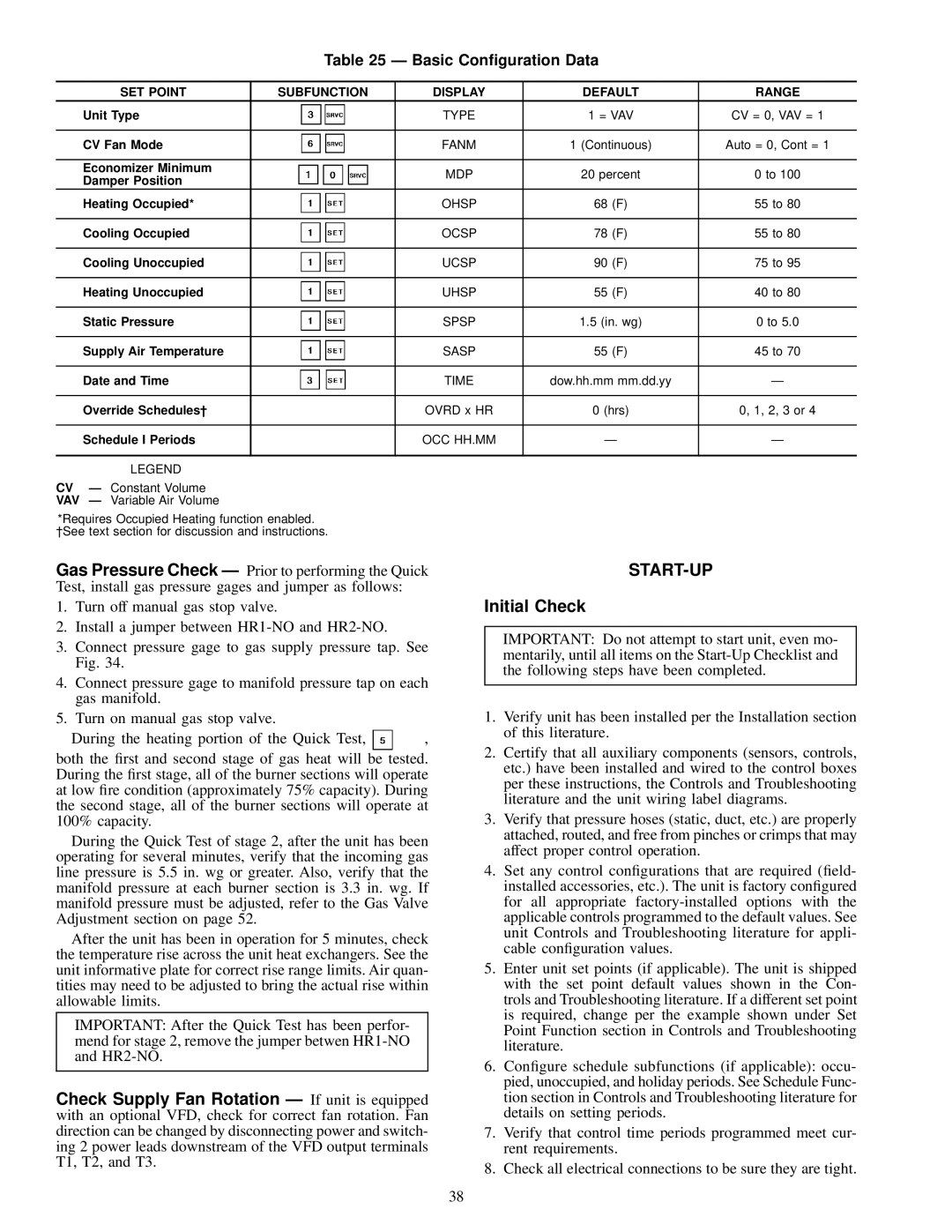MPE62L-10R, 50MP62L-10R, 48MPD specifications
The Carrier 48MPD, 50MP62L-10R, and MPE62L-10R are advanced rooftop packaged units designed for a variety of commercial HVAC applications. These systems offer a compelling blend of energy efficiency, versatility, and high performance, making them ideal choices for businesses looking to enhance their indoor climate control.One of the standout features of the Carrier 48MPD series is its high efficiency rating, which significantly reduces operational costs while minimizing environmental impact. The unit utilizes advanced scroll compressors that provide reliable and efficient cooling capabilities, ensuring optimal temperature regulation regardless of outdoor conditions. This innovative design also contributes to quieter operation, enhancing indoor comfort without disruptive noise levels.
The Carrier 50MP62L-10R model boasts superior cooling and heating capabilities, equipped with a multi-speed fan system that allows for tailored airflow to suit specific project requirements. This model's economizer feature is pivotal for harnessing outside air to offset mechanical cooling, leading to further energy savings, particularly in moderate weather conditions. Additionally, the unit's dual-fuel capability enhances its operational flexibility, allowing it to switch between electric and gas heating sources depending on efficiency needs.
In terms of control technologies, the MPE62L-10R is equipped with Carrier's advanced Smart Evaporator Control, which ensures precise humidity management while optimizing energy consumption. This model also integrates seamlessly with building automation systems, enabling remote monitoring and adjustments for greater operational oversight and efficiency. The intuitive user interface simplifies system programming and operation, making it accessible even for those without extensive technical backgrounds.
Another important characteristic of these units is their robust construction, designed to withstand challenging weather conditions and ensure longevity. The use of high-quality materials and components means lower maintenance costs over time.
Overall, the Carrier 48MPD, 50MP62L-10R, and MPE62L-10R represent a well-engineered suite of HVAC solutions that excel in efficiency, adaptability, and user-friendliness, establishing themselves as leading choices for commercial indoor climate management. With their blend of innovative technology and solid performance, these systems are well-suited to meet the diverse needs of modern commercial spaces.

